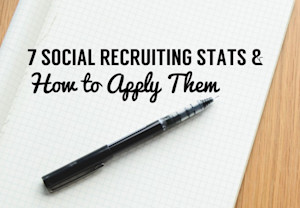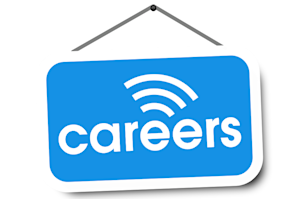
How HR Tech is Automating Your Hiring
Automation has developed beyond pushing job posts to online job boards and scanning resumes for key words.
Complex HR tech can automate social recruitment, candidate outreach, employee referrals, and a multitude of other repetitive tasks, improving and simplifying the hiring process.
From LinkedIn developing mechanized outreach systems to FedEx using an algorithm to determine culture fit, the automation of hiring is everywhere!
From Weeding Out the Week to Finding the Best
Originally, the algorithms designed to help HR sift through applicants was focused on excluding unqualified candidates rather then finding top talent.
Today’s best HR tech is focused on finding qualified candidates. - Click to Tweet
Zao, a company we’ve talked about already in our article on candidate matching, is able to search through your current employees social networks to identify the best potential hires. Employees are then alerted by Zao’s software and prompted to make a referral.
Xerox is using a computer program to test applicants for their call centers.
This test, created by software company Evolv, asks more typical questions such as “How would you respond to this angry customer?,” basic problem solving questions involving pattern recognition, and just plain weird questions like, “Which statement do you most agree with: Most managers are motivated to make ethical decisions or I almost always ask for help in difficult situations.”
Job seekers are rated based on both their answers and the way in which they go through the test.
The test asks no questions related to time efficiency even though, according to Xerox, this is one of the most important skills call center worker should have.
Evolv’s test examines how applicants divide their time spent per question and the efficiency with which they provide their answers to rate them.
For more on Xerox's collaboration check out this fantastic podcast: Will a Computer Decide Whether or Not You Get Your Next Job?
Tests like this do not negate the importance of one-on-one interviews, but they do a fantastic job of identifying which candidates should be interviewed.
Especially useful about software like Evolv’s is that, unlike older technology, it doesn’t rely on keywords or job titles to make decisions about a candidate’s suitability, a process that really only works in fields where very specific certifications are mandatory.
Automation is only game changing when computers make judgments by creatively assessing skill and ability, not based on a minimum number of years of experience or certain degrees!
Eliminating Redundancy
If you are in HR then I’m sure that you are all too familiar with redundancy creep.
It is not fun. It is, in fact, quite soul sucking.
Having to copy and paste job posts again and again just so that you hit each of the different sites that you use to advertise to candidates is a complete waste of time.
Enter automation.
HR tech is evolving to become more collaborative. ATS integrations that allow companies to automatically share the jobs they post to major search engines are old news, but current HR tech takes this kind of automation to a new, and much more social, level.
Higher end applicant tracking systems now offer automated job post sharing to social networks as well as job boards.
ICIMS and Simplicant allow their users to share job posts to their social networks without having to do any annoying copy and pasting. They also automate sharing to search engines.
Depending on job volume this kind of mechanization can save you hours each day.
Even if you don’t use an ATS that offers social sharing (or an ATS at all) then you can still use recruitment apps like Jobcast to synchronize with either your ATS, or your career site to automate your social recruitment process.
Much like Hootsuite or Buffer, which I highly recommend using to automate your social employer branding, Jobcast can automatically grab your job posts and share them to your social networks.
Unlike non-recruitment specific tools, the Jobcast app’s technology ‘understands’ things like job title and category and can use that information to ensure that your job posts are properly formatted for social media.
Have a look at this article for more excellent social recruitment app recommendations.
Robot Recruiters
No thank you.
HR and the hiring process specifically needs a human touch.
It may be up to bots to send out quick contact messages, but those messages still need a real person's name attached to them to appeal to candidates!
Smart recruitment technology makes the decision process easier, sifts through big data, provides quick reminders, and reduces mundane tasks.
It does not, and it never will, replace the recruiter.





